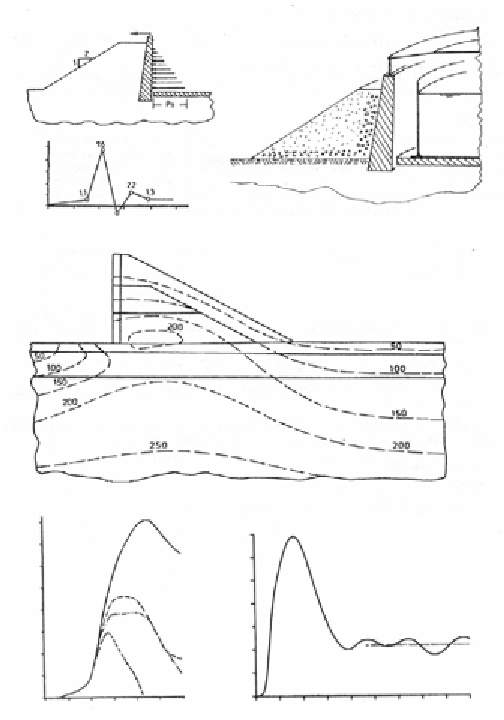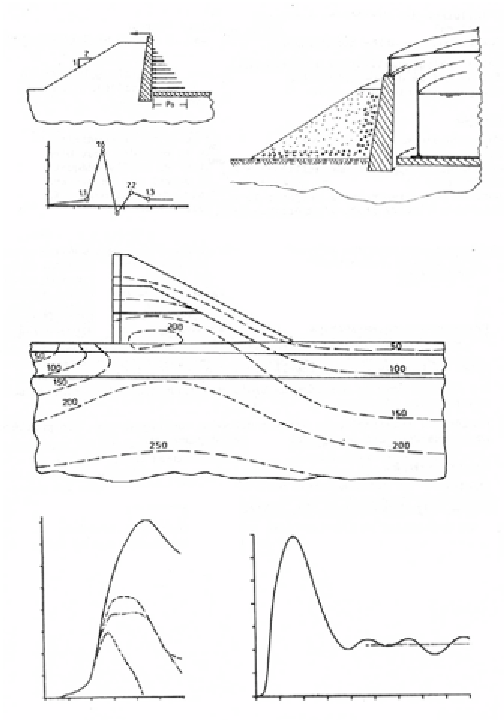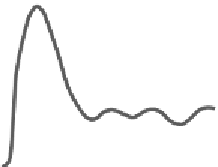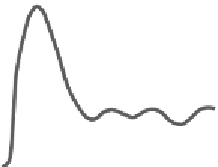Geoscience Reference
In-Depth Information
U
U
U
roof
roof
roof
P
P
P
LNG
LNG
LNG
1
1
1
P
MPa
P
MPa
P
MPa
time (sec)
time (sec)
time (sec)
0.5
0.5
0.5
initial state
stratification
G modulus MPa
initial state
stratification
G modulus MPa
initial state
stratification
G modulus MPa
U
cm
U
cm
U
cm
endochronic
endochronic
endochronic
U
U
U
5
5
5
vMises
vMises
vMises
10
10
10
MC
MC
MC
elastic
elastic
elastic
time (sec)
time (sec)
time (sec)
time (sec)
time (sec)
time (sec)
1.0
1.0
1.0
0.5
0.5
0.5
Figure 8.3b Modelling constitutive behaviour, storage tank
Constitutive behaviour
For the improvement of the stability of an LNG reservoir design, in case the
inner metallic tank suddenly ruptures, a soil embankment is placed around the
outer concrete tank wall. To prevent (explosive) gas escape, the roof structure must
remain intact under dynamic forces caused by induced dynamic liquid flow
pressures. The critical issue is the maximum horizontal displacement
U
of the roof
edge (Fig 8.3b). Structure and soil properties and initial state are chosen and
various constitutive soil behaviour models are selected: elastic, von Mises (elasto-
plastic, no friction), Mohr-Coulomb (elasto-plastic and friction), and endochronic
(visco-elastic including creep). The choice of characteristic parameter values for
different constitutive models, based on available soil tests, has been taken identical
when appropriate. The results show a wide range of the calculated critical
displacement
U
varying from 6 to 16 cm. The residual deformation (just one, the
Mohr-Coulomb model, is also shown) varies even more. As in this case there is not
yet a structure, practical validation or monitoring is not possible. The client was not
pleased with an uncertainty range of a factor 3. Here, it is up to the engineer's






















Search WWH ::

Custom Search